Restarting a Painting
This week, we talk about restarting an old painting or restarting creating so that we have a new confidence and freedom.
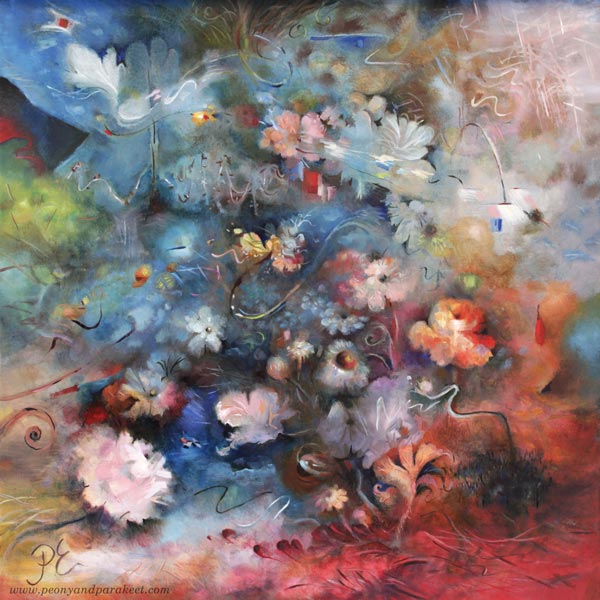
This piece called “For Liberty” was been painted on the top of an old work. It was a bit challenging to photograph because it’s painted on wooden paint board – a very smooth surface that reflects light. But before I go into more detail, I want to tell a story from my childhood that has had a big impact on me. If you have taken my classes, you might recognize my passion for acting!
“Open Your Arms”
I have been an enthusiastic actor as a teenager. Once I was the lead in a school play directed by the teacher. He was a very good director. “Spread your arms,” he told me when we were practicing a scene. For a teen, spreading the arms was a huge gesture. I still remember how my hands reluctantly opened and released from the grip. But wide open, I suddenly had a sweet sense of confidence: I owned this arena and I was going to get an audience too. Everything will be fine and even better than before!
My friend and I had been chosen to the school play because we had a private play club that we had put together. I wrote the script for the plays and we performed them to our class. It was great that our native language teacher allowed the performances. The teacher Varpu Lehtolainen and the teacher who directed the play, Taavi Lehtolainen, were married. Their creativity was inspiring. Their daughter is Leena Lehtolainen, who later became a famous author in Finland – no wonder!
Confidence for a Restart
When a person makes another person free, the feeling that he ignites is not based on successful performances in the past. The new self-confidence comes from seeing what will be possible in the future. You can go back and start over as many times as you want. Everything will be fine.
In 2020, I made an oil painting called “Wreath Maker.” However, I failed in varnishing and did not put it on display or for sale. The painting is painted on a board instead of a canvas, and it is quite challenging as a surface.
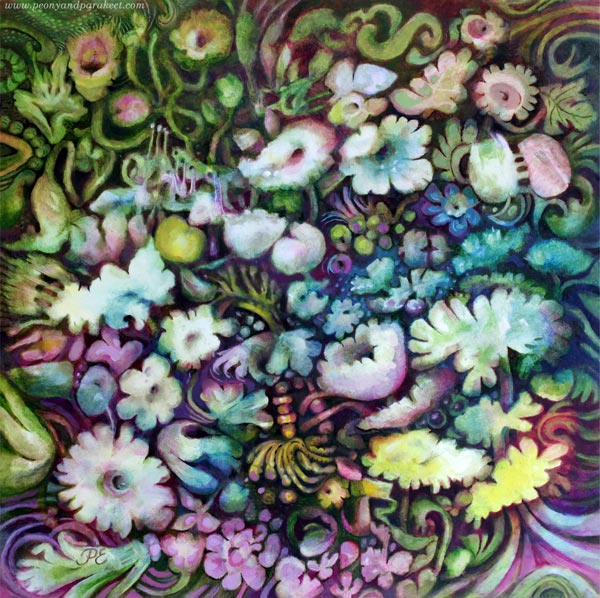
When the local artists’ association asked for works with the theme “Red, White, Blue”, I came up with the idea of sanding off the varnish and doing a new painting on top, somewhat based on the old one.
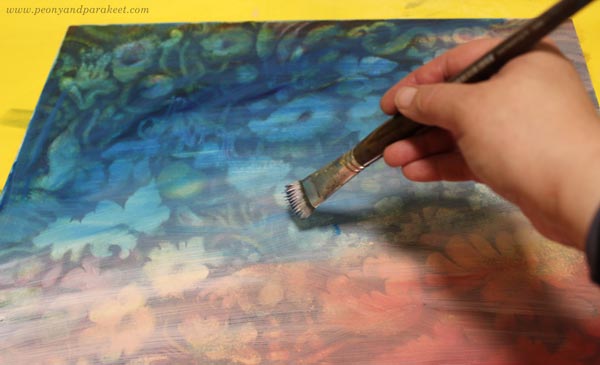
As soon as I started painting, there was this “spread your hands” feeling. I wanted to free the painting from its constraints and give the flowers their own roles.
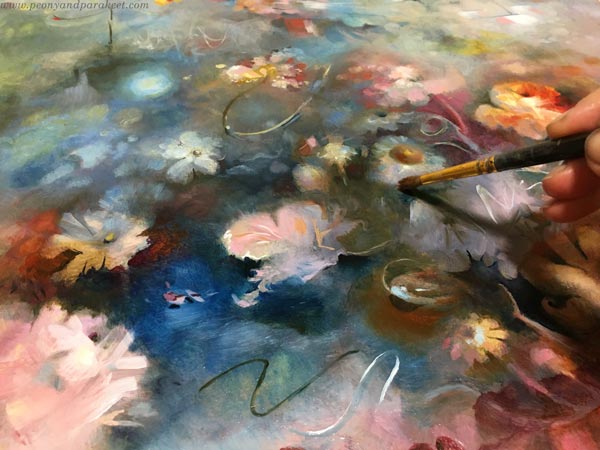
Rubens’ paintings of battle scenes from the 17th century came to mind, and I wanted to make a grand theme too – where people wake up to defend their own values and the flags are flying high.
Restarting to Release the Visual Voice
I have painted this in parts and between the sessions, I have been building a new course, where freedom is also a central subject. I wish I could be a teacher like Taavi Lehtolainen: “Spread your hands, control your space!”
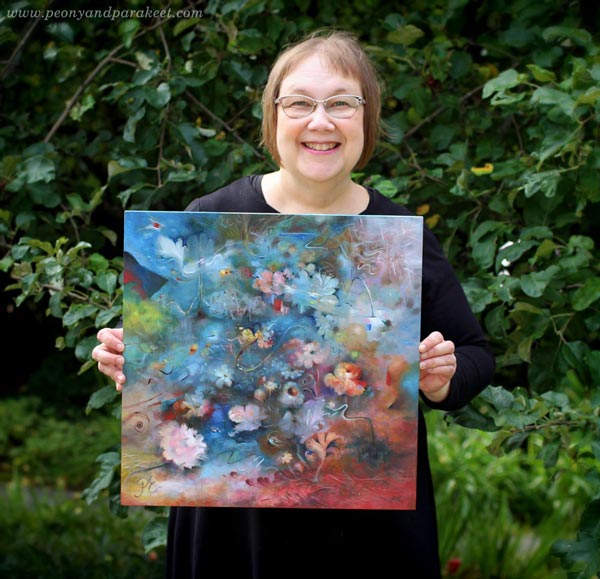
Art always does well when the flowers are allowed to grow freely and each in its own way.
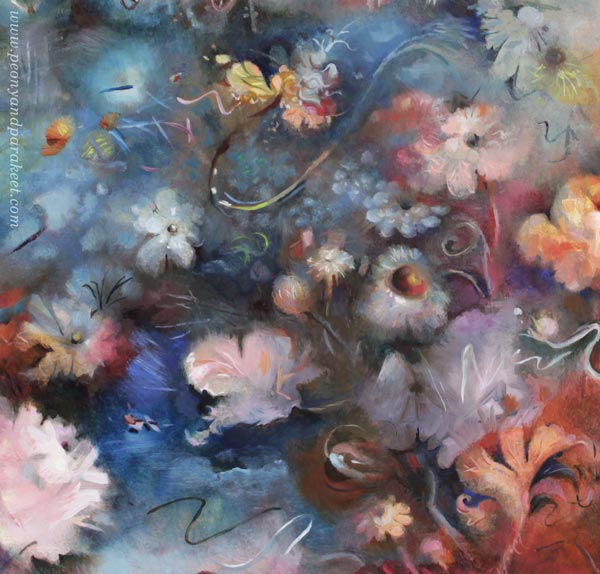
A painting is released when it finds its meaning. I feel that’s what happened to this piece. The previous version was okay, but the message is now clearer, the painting is more airy, and the flowers are now more diverse and expressive.
When you want to fine-tune your visual voice, maybe this kind of freedom is what your art is lacking?
What do you think?
Love for Flowers by Painting and Using Colored Pencils
This week has been rainy, but I still want to talk about the love for flowers!

Over the years, my husband and I have become more and more interested in plants. This summer we have renovated our backyard garden and reduced the amount of grass. The garden now has a large pond, a pergola, new trees and shrubs, deep perennial beds, and natural slate paving. It takes time for the plants to take root, but it’s already looking better than before.
The renovation has strengthened my inspiration for flowers and plants. In August, there are still flowers in Finland, but when fall comes, I am comforted by grasses and mosses. In winter, I focus on houseplants. The presence of plants puts my life in perspective, but in such a way that there is room for play and imagination.
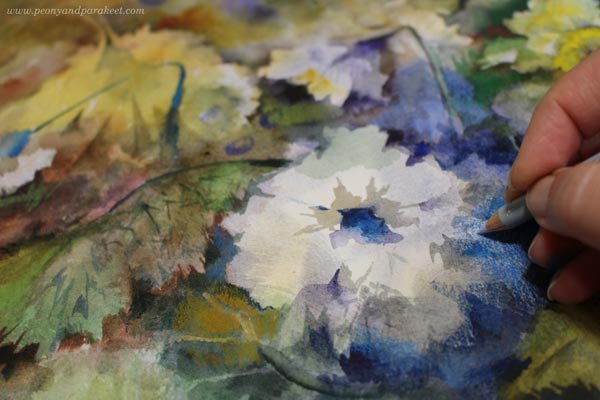
I feel my core unit is a flower and everything else is born from that.
Growing Love for Flowers
When I look at flowers in the wind and rain, the bending of their petals and stems in different directions creates an endless number of abstract compositions. I find it artistically inspiring, but I’m also inspired by the spiritual connection I feel with flowers. Flowers have expressions and gestures just like people have. Any big theme can be expressed through them.
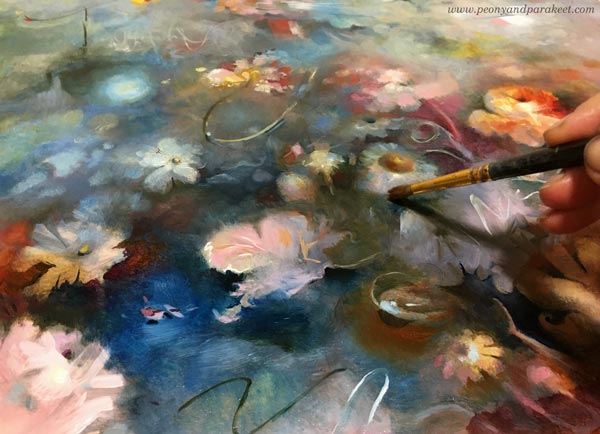
Already in 2017, I wrote about the secret language of flowers and now six years later, I feel I don’t only understand it but can use it myself. This ability has made my art more expressive, and there’s a lot I want to share with you too.
Coming Up! – Freely Grown
Last month I started to feel the urge to do a new online course. I toyed with many ideas, but again, flowers were the only ones that inspired me. So I have now been building a flower painting course called Freely Grown. It declares love for flowers and explains how to catch their free spirit.
The course is a bit different than many of my other courses, as this one focuses on one project instead of many different ones. The project is first painted with watercolors and then finished with colored pencils.
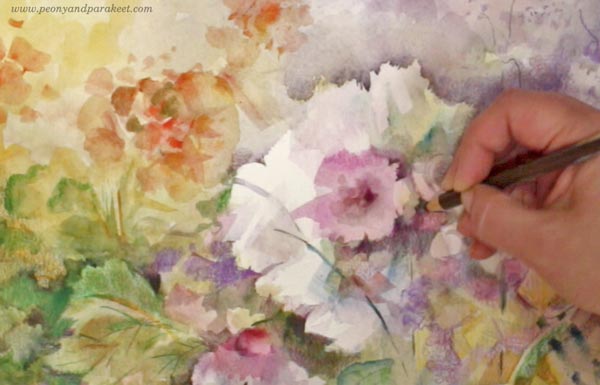
Painting with watercolors is fun and colored pencils make it easier to finish the painting. It’s much easier and faster than working in oil, but I share many tips that can be used with any supplies. We will paint freely without any photos but aim for a natural impression.
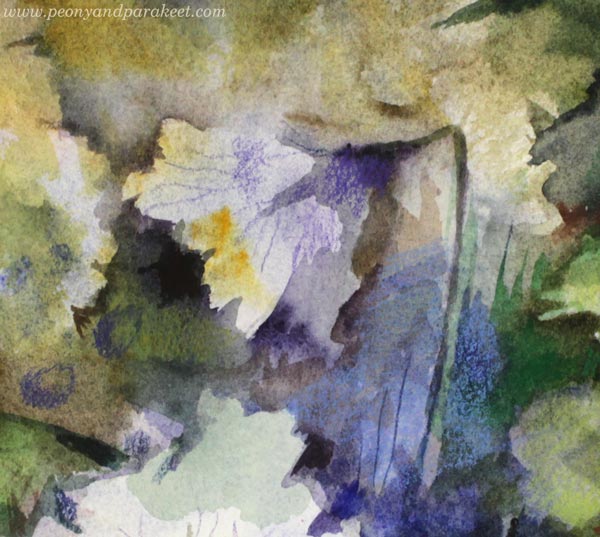
My plan is to start the sale in September and the actual course in October. I hope you will come and paint!
Start with Something – Following Picasso and Edelfelt
This week, we are using inspirational art as fuel for our own art. I show how I created my own version of Albert Edelfelt’s masterpiece by following the advice given by Pablo Picasso.
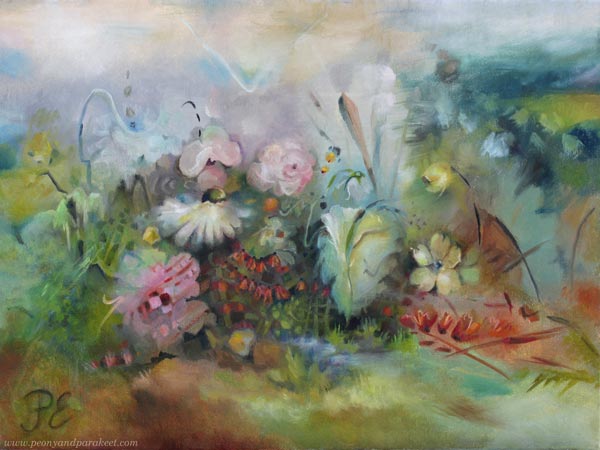
“Friends by Fate” is a small painting, but one of my favorites from the series that I made for the current exhibition. Because the title of the exhibition is Taiteilijat Edelfeltin tunnelmissa – Artists in the Mood of Edelfelt, I wanted to make my versions of some of Albert Edelfelt’s (1854-1905) artworks. For example, I made this one, and this one. “Friends by Fate” uses Albert Edelfelt’s painting “Women of Ruokolahti on the Church Hill” as inspiration.
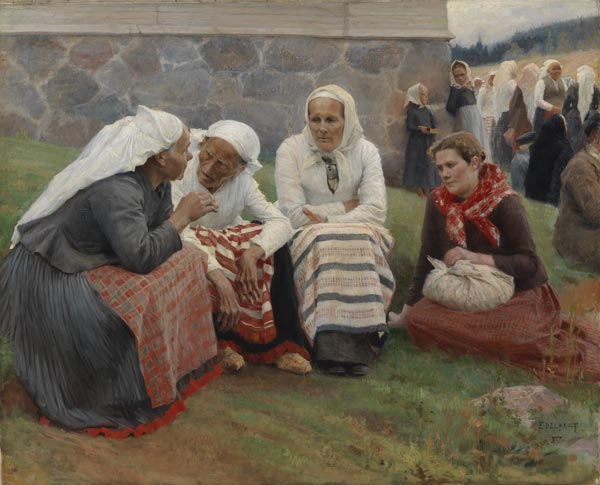
This is a very famous painting in Finland. Even if Albert Edelfelt painted a lot of portraits of wealthy people to finance his profession, he became known for pieces like this that depict ordinary folk.
Start with Something!
I have always been intrigued by this Pablo Picasso’s (1881-1973) quote:
“There is no abstract art. You must always start with something. Afterward, you can remove all traces of reality.”
In my opinion, this applies to any art, not just abstract. You can always start with something and then make your own version.
For example, even if there are people in Albert Edelfelt’s painting, it doesn’t mean that my version has to have them.
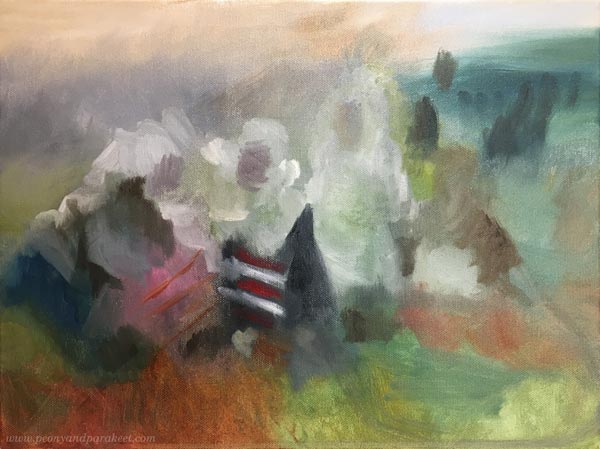
Start the painting with a similar composition, but then slowly let it grow in its own direction.
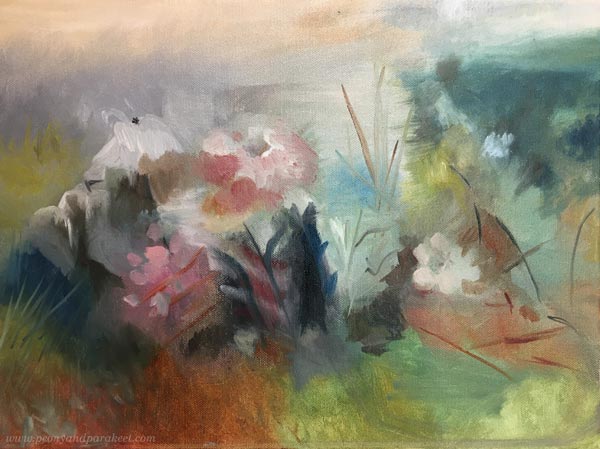
In my version, the flowers and plants replace the women, and the location is different too. I was thinking about the area where I live and how people gather together on a summer evening.
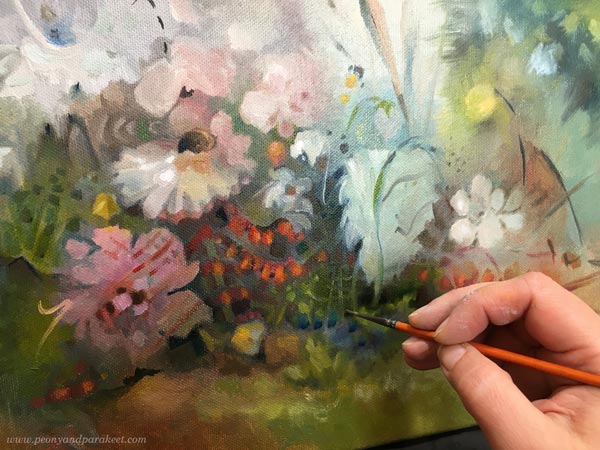
There was quite a lot of work in the details. Albert’s work is not clumsy, so I wanted mine to be well-finished too.
Following Picasso and Edelfelt
I love to paint so that flowers and plants are the characters of the painting. I feel I can combine my sense of humor with my yearning for beauty.
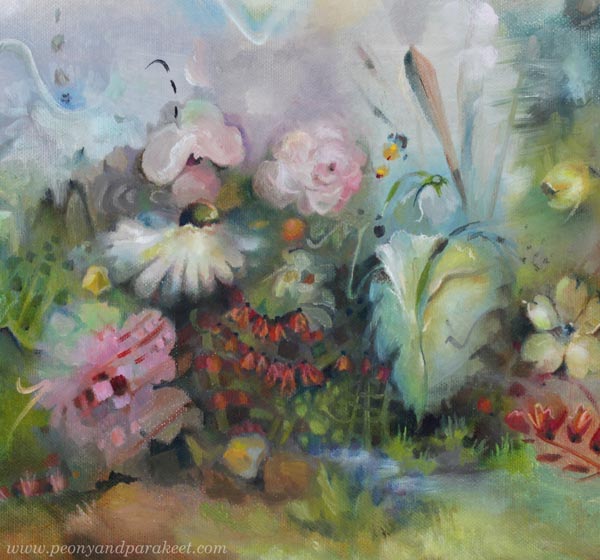
Flowers have given me a secret language that I can use to express anything. With this realization, I feel more and more drawn to the boldness of Pablo Picasso, the re-creator of Diego Velázquez’s 1656 masterpiece “Las Meninas”.
Others have seen what is and asked why. I have seen what could be and asked why not.
Albert Edelfelt was also appreciated in his lifetime, but he didn’t have the confidence that Picasso had. He wrote to his mother:
” I fear nothing else than that I become a raté – a half-talent and an unhappy person.”
(Free translation from Finnish)
This kind of seriousness is what I recognize too: puolilahjakkuus – half-talent – who would like to be that! But still – or maybe because of that, it’s good to embrace playfulness when creating art.
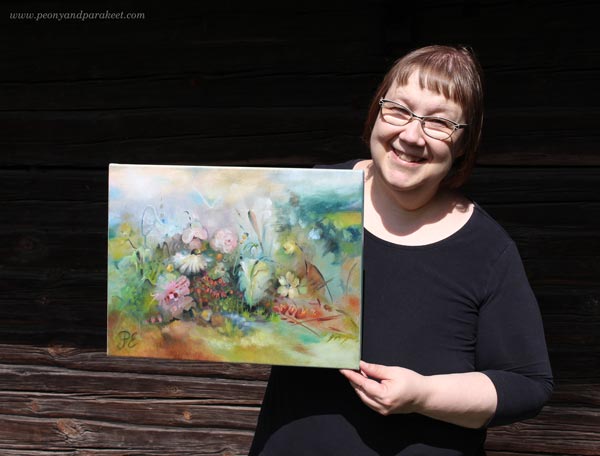
Like Edelfelt, you can recognize the fears and set the bar high.
But then, act like Picasso – Start with something and then ask: what could be and why not!
From Artist’s Focus to Artist’s Between
This week, I challenge you to question what the word “focus” means to you as an artist.
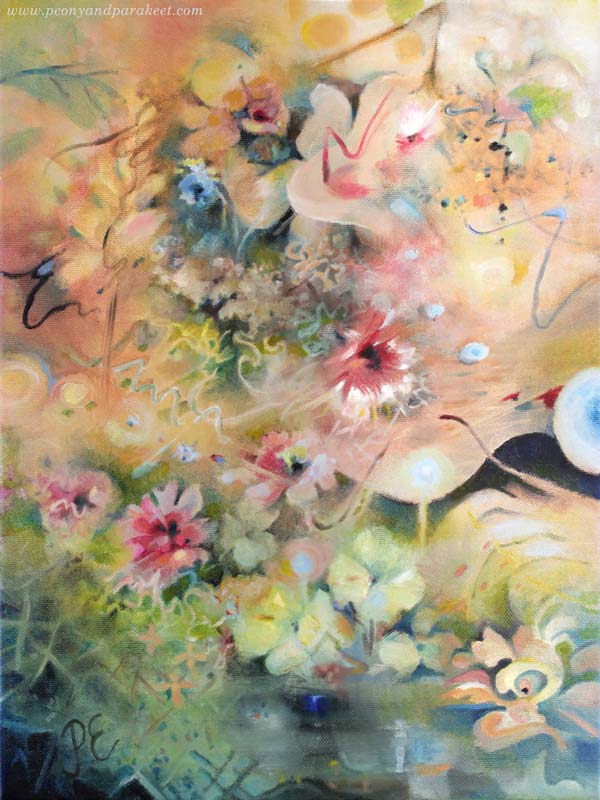
I thought a lot about the artist’s focus when painting this piece. This was one of the last paintings to be finished for my exhibition.
Artist’s Focus
Have you ever said this:
“I want to find my focus in art.”
Although I want to direct my energy wisely as an artist, something in that statement has always bothered me.
For me, the essence of art is not narrowing, but expanding – not isolating but inviting. The artist expresses not only herself but humanity in general. And as humans, we are rarely completely serene or focused. We seldom belong to only one group, one era, or one world. We are often one foot in one field, one foot in another.
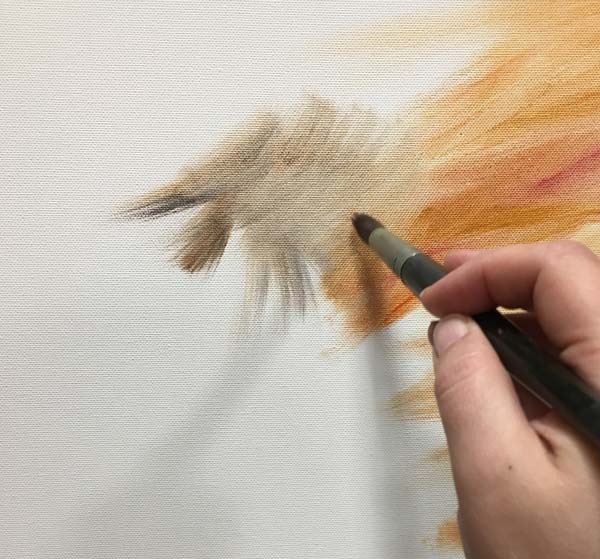
When we create, could the inspiring word be more like “between” than “focus?”
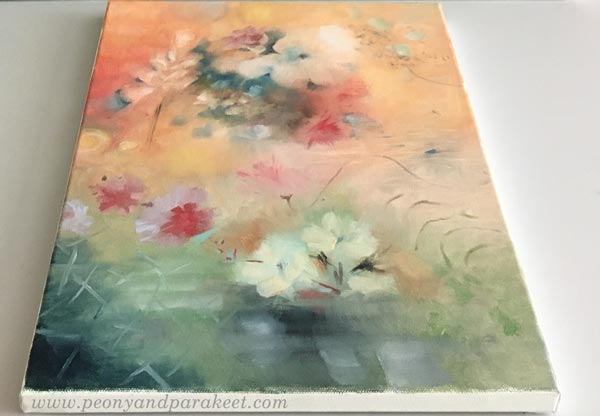
Focus is nice and pretty, but is it art?
Inspiration from Albert Edelfelt
In this series of paintings, my inspiration was the Finnish master painter Albert Edelfelt (1854-1905). For the painting of this post, I took ideas for the color scheme from this pastel work by Edelfelt. This piece is currently displayed at the Albert Edelfelt Exhibition in the Ateneum Art Museum in Helsinki.
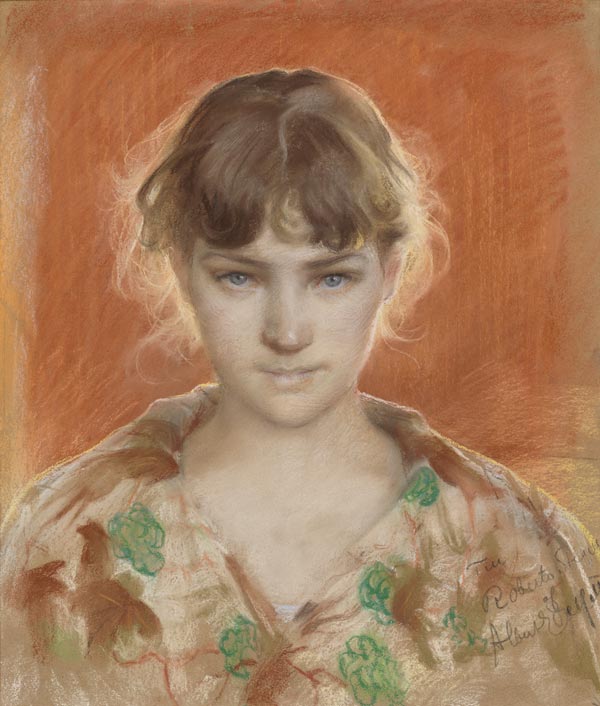
While studying the colors, I thought about the end of the 19th century and the intelligent look of the woman. Wasn’t this also “between” rather than “focus?” Between a man and a woman, if you think about the relationship between the model and Albert. Between being a model and having her own thoughts, if you study a woman’s gaze. Between representation and abstraction, if you observe lines and shapes.
Abstract art began shortly after Edelfelt’s death. He probably already felt its presence, felt that he was between two worlds.
From Artist’s Focus to Artist’s Between
I decided to throw myself fully into being between two worlds in this painting.
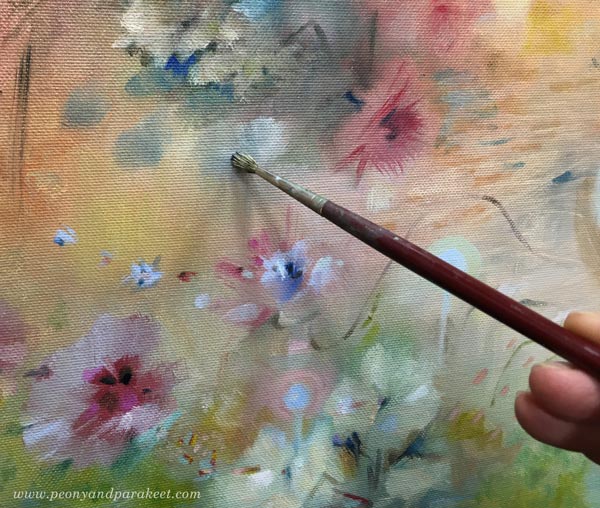
“Between” is an uncomfortable state of being, so this painting couldn’t contain only easy and beautiful. “Between” is a bit like walking in nature and then bumping into apartment buildings. Or when you’re admiring clear water in a pond and your eyes fall on the filters. Focus can then only exist if you close your eyes. Not very eye-opening, eh?
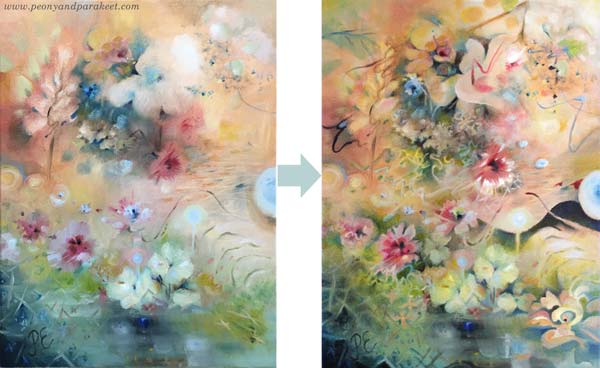
This painting has two different styles and although it is small in size, I feel that it reveals the secret between what I do and what I think.
I noticed at the opening of the exhibition that I don’t like to talk about this work, because I find it somehow intrusive. Often when the paintings are created, they are nice characters, a bit shy and sensitive, but fun company. This one is straightforward and doesn’t hide its contradiction.
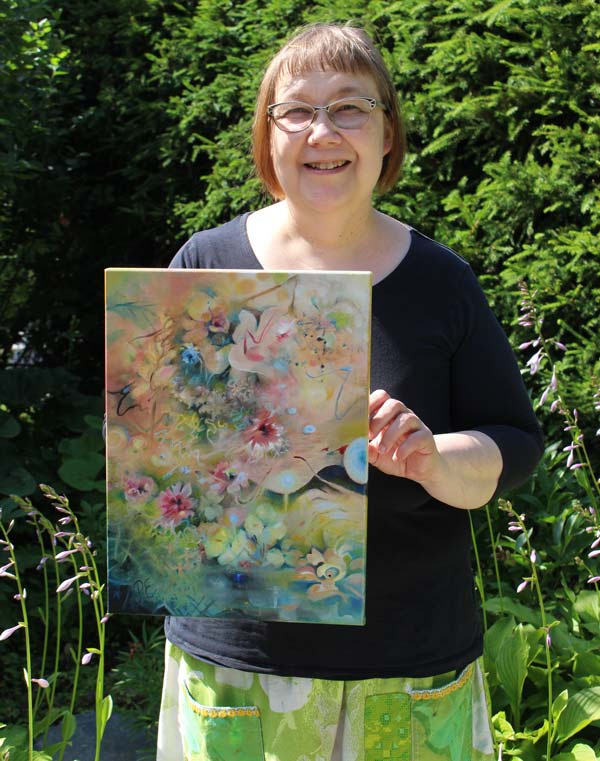
However, there is a lot of power in the contradictions and lack of focus. I want to continue to challenge myself to draw artistic inspiration from it.
Do you also feel that you are between two worlds?
In art-making, could you replace the yearning for “focus” with the embracing of “between?”